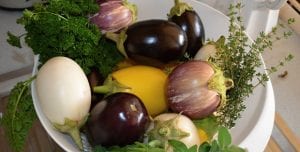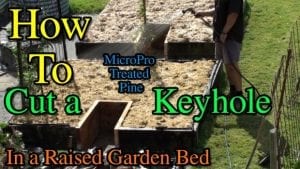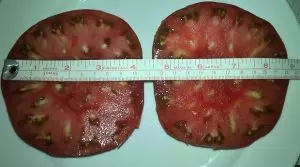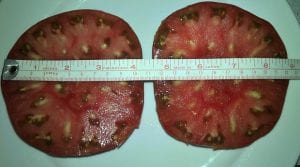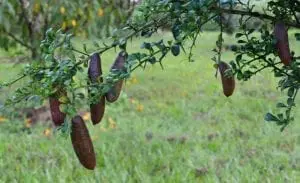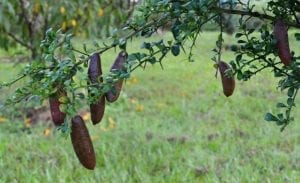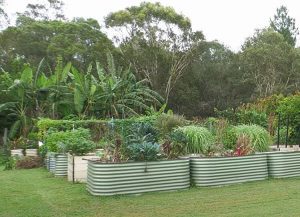So many of us have come to live in subtropical climate areas from colder, more mild regions. Naturally, we have grown up eating traditional European vegetables, so when we become gardeners, those are what we try to grow. We soon realise that those veggies aren’t so compatible with humid subtropical conditions, and that we need to adapt to what works well in our climate.
Luckily, there is a wide range of crops that thrive in hot and humid summers. Here are 10 of our top picks that we reckon are underrated; they’re all very easy to grow, are low-care, can handle excess rain and provide an abundance of food.
Eggplant
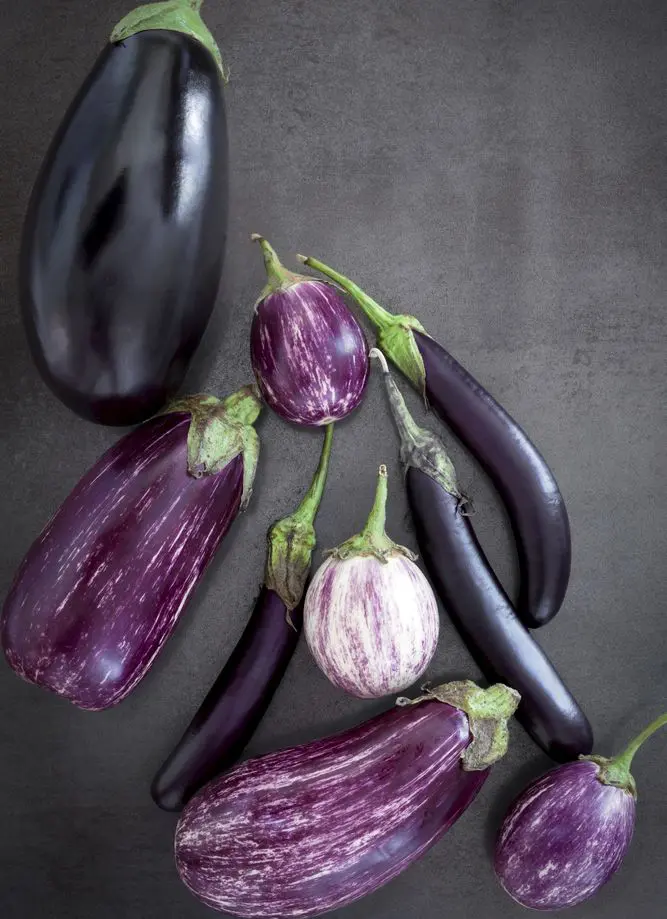
We all know what eggplant is because we see it available commercially. But did you know there are 18 different varieties you can grow? Yes really! In supermarkets we only see the large purple globe eggplants, but eggplant comes in various shapes, sizes and colours, that range from round, small & white, to long, thin & stripy. Eggplant can be a real star in the subtropical summer garden, too. It is easy to grow, quick to produce, suffers little pest damage, and is versatile in the kitchen. Eggplant is good enough to shine on its own (check out our eggplant & okra parmigiana) but also makes an excellent addition to stir-fries, curries, pizza, dips, soups and lasagne.
Yacon

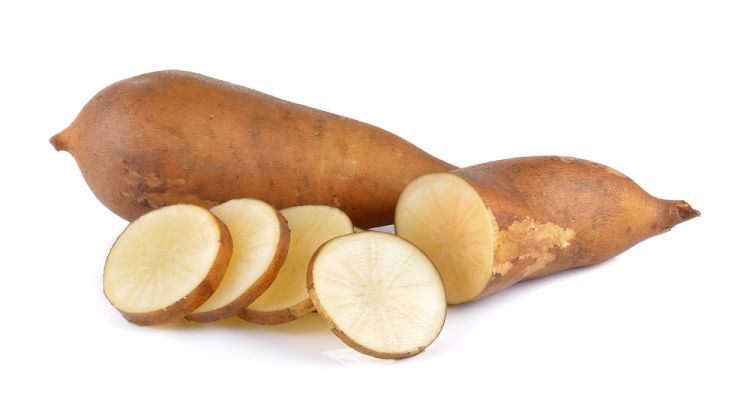
The little-known yacon (smallanthus sonchifolius), also known as Peruvian ground apple, isn’t seen in shops yet provides excellent food value. This large plant (2m) is a perennial in the tropics & subtropics, and grows an edible underground tuber that resembles sweet potato. Unlike sweet potato, however, yacon tubers taste like an apple/watermelon/celery mix and, once peeled, can be eaten raw. This crunchy, juicy food makes a great snack on its own, or can be added to smoothies, coleslaw, salads and stir-fries. Yacon absorbs the flavour of sauces and dressings well, so it carries flavour while providing bulk food value at the same time.
New Guinea Bean (Italian Gourd)

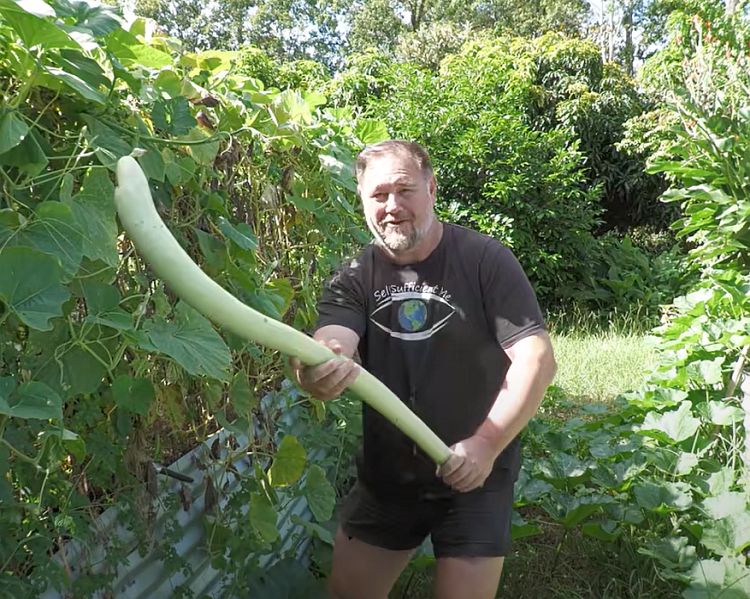
Here’s another fantastic veggie for the subtropical garden that is little-known & under utilised; the oddly-named New Guinea Bean. A member of the cucurbit family, new guinea bean (lagenaria siceraria) is a climbing edible gourd or squash which originates in Africa. The fruit grow up to 1.2m long, but are best harvested & eaten when they’re in the 30-60cm size range. The creamy white flesh can be likened to that of zucchini, and is used in the same way. Choose this plants garden position wisely- like pumpkin, it is a huge heavy climber which requires trellising and significant space.
Asparagus

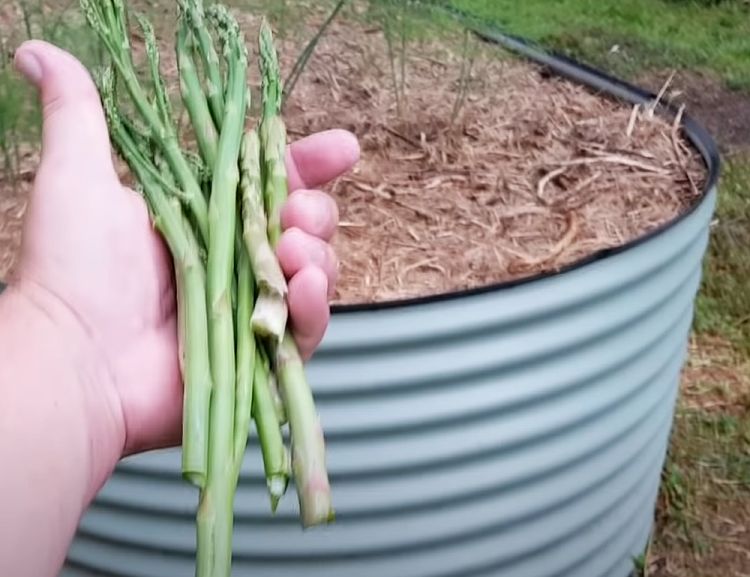

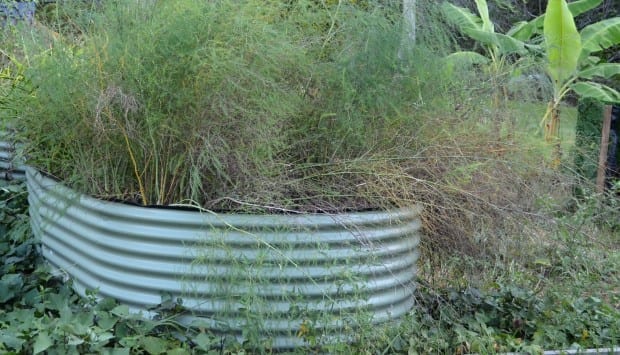
Despite producing spears only seasonally, asparagus is a valuable food plant in the home garden. It is a low-maintenance long-lived perennial that is easy to grow, so is a delight to have at home. Asparagus contains a wide range of vitamins and minerals, and is one of the most nutrient-dense foods you can grow. Add to that the taste and price advantages; spears picked fresh from the garden taste infinitely better & are obviously much cheaper than buying from the grocery store. To learn more about growing asparagus, check out our detailed guide.
Beans

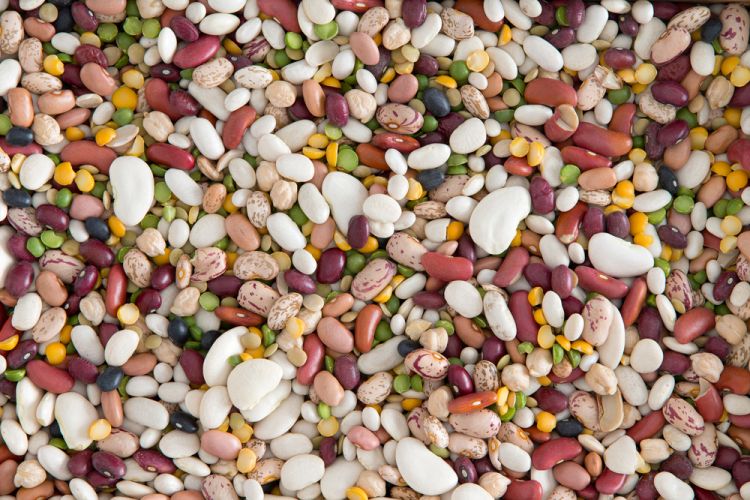
There are numerous types of beans you can grow at home, but those which which can be dried and preserved for later use are a particularly valuable food source. Beans are rich in a number of important micronutrients, including potassium, magnesium, folate, iron, and zinc, and are important sources of protein in vegetarian & vegan diets. Beans are low GI, rich in soluble fibre, & among the only plant foods that provide significant amounts of the indispensable amino acid lysine. Dried beans are non-perishable with a long shelf life, and they’ll retain their nutritional value for 2-3 years if stored correctly.
Beans are very easy to grow and as a vertically growing climber, are space-efficient in the garden. Consider growing varieties like borlotti beans, madagascar beans, runner beans, black beans, red kidney and pinto beans.
Taro & Yams

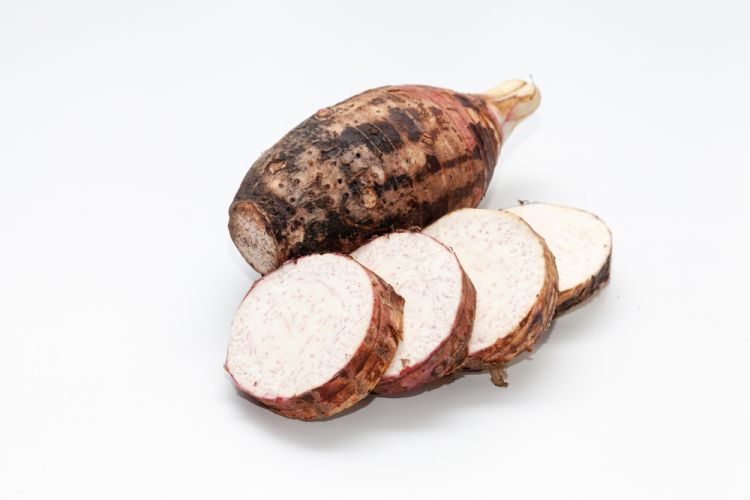

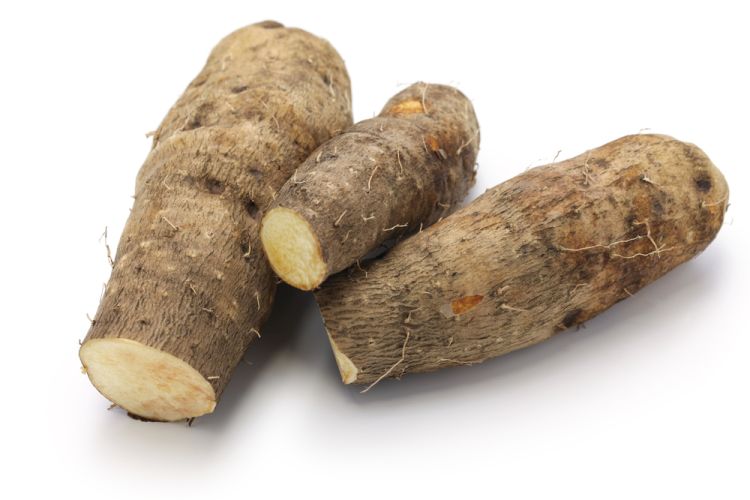
Taro (colocasia esculenta) and yams (dioscoria alata) are both easy to grow through subtropical summer and are definitely underrated food sources. Widely cultivated throughout the South Pacific, these both grow as starchy underground tubers which can be cooked and eaten. Both are tropical-subtropical summer crops which grow similarly to sweet potato, and are just as easy to use in the kitchen.
Yams grow as an annual vine and will need trellising, while the perennial taro is a water-lover that does best with wet feet. Taro is perfect for small gardens, as it’ll thrive in a bucket full of wet soil.
Okra

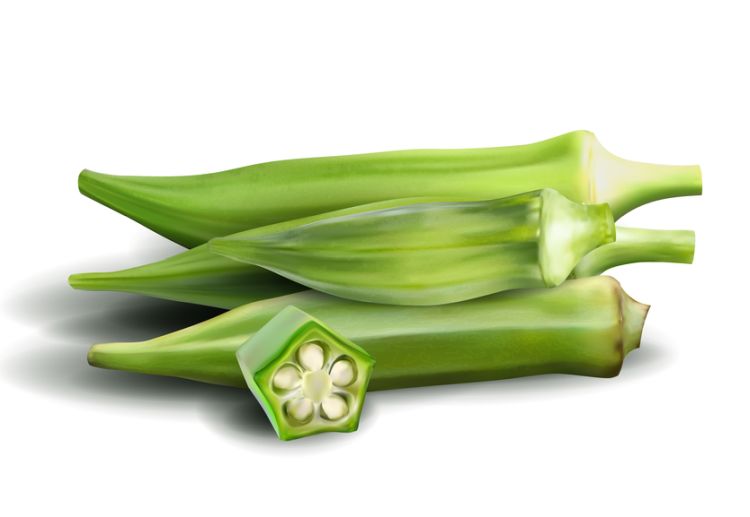
Native to Ethiopia, this lesser-known vegetable is a winner in the hot-climate summer garden. Okra pods are the edible part of the plant: they grow to about 15cm (5″) long, and can be eaten on their own or added to stews, stir-fries and soups. This is a brilliant annual vegetable for the tropics- the pods grow incredibly fast (zucchini speed) and the plant is pest-resistant and relatively drought tolerant. In the kitchen okra is something of a variable vegetable, which on its own has a mild, somewhat grassy taste. It’s crunchy when cooked quickly yet tender when slow-cooked. The mucillage factor is all-encompassing when its crumbed and fried, yet slice it and throw it into a stew and you won’t even notice it.
Collard Greens
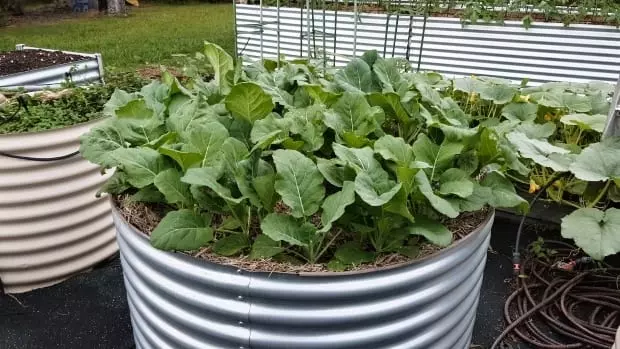
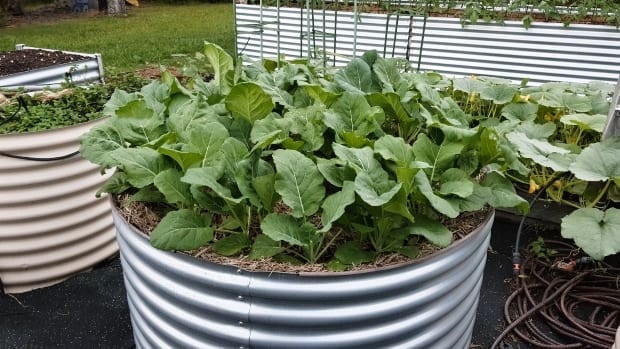
Collards are essentially a loose-leaf cabbage which doesn’t form a ‘head’ like standard cabbage. This means that you can start harvesting & eating this crop relatively quickly. Both large and small leaves make great eating, and you can use the leaves as you would cabbage.
Collards are best grown through winter in the subtropics, as they will attract pests like the dreaded white butterfly if you plant them in summer. Typical of most cut-and-come-again greens, collards require a lot of energy to keep producing well. Apply fertiliser regularly, making sure that you choose one that is high in nitrogen. Here is our video guide to growing collards.
Celeriac

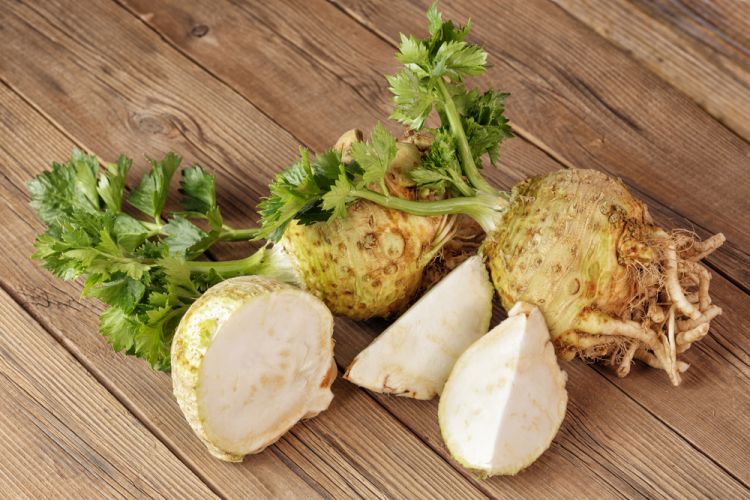
Grown for its nutty-tasting underground tuber, celeriac is a lesser-known root vegetable which grows through winter in the subtropics. In the kitchen, celeriac is extraordinarily versatile. You can eat it raw (in salads) or cooked as you would any root vegetable. It makes a fantastic mash with garlic and butter, it can be fried in strips like chips, or used to bulk up soups, stews, quiches and pies.
The tiny seeds require light to germinate & are slow starters, so need to be sown in punnets then planted out to their final garden position. Celeriac is a slow grower, too, so if in QLD, be sure to get it started in March so it has enough time to mature before summer hits. On the upside, celeriac is hassle-free to grow. Top-dress it with compost during the growing season for the best results.
Artichoke

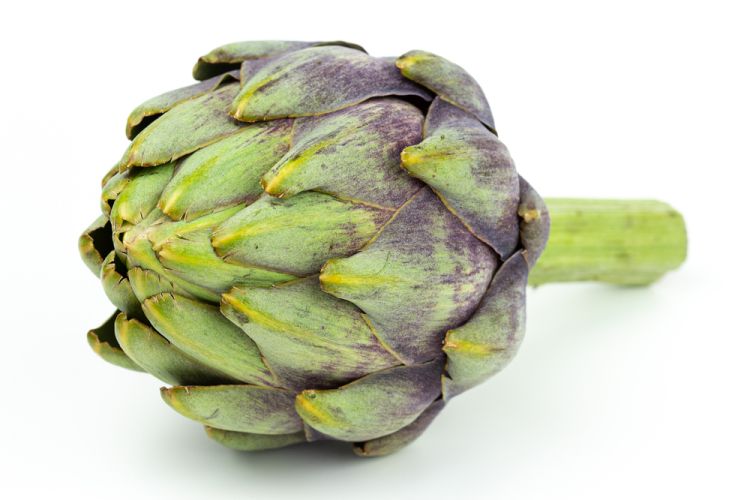

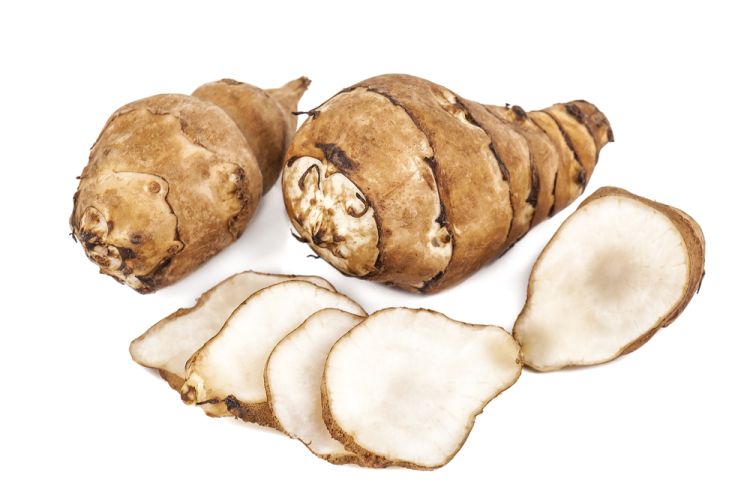
When I say ‘artichoke’, I mean both kinds- globe and Jerusalem. Despite both being large perennials with the same name, these are in fact 2 completely different plants.
Globe artichokes are a classic food in traditional Italian cuisine and lend themselves to a variety of recipes. They are easy to grow, and will withstand summer humidity even if they don’t like it. Like asparagus, they are a big plant which need space and will remain in the one position for some time, so they need a rich soil with good advance preparation.
Jerusalem artichoke, also called sunchoke, is a hardy, tall, herbaceous perennial that grows to 3 m high. Native to North America, this is a fast-growing vegetable which produces edible underground tubers. The origins of its name are unknown, yet it may have gained the ‘artichoke’ part of its name because it does taste rather like globe artichoke. Jerusalem artichoke is a low-care edible which is easy to grow and doesn’t require great soil, so is ideal for beginner gardeners. At the same time, it will give a better yield with good soil, so you can add some blood & bone and/or aged chicken manure at the time of planting. This tuber can be eaten fresh or preserved. They store well in a brine solution, or can be cooked into soups, casseroles and stir-fries. To get the low-down on Jerusalem artichoke, check out our detailed video guide.


